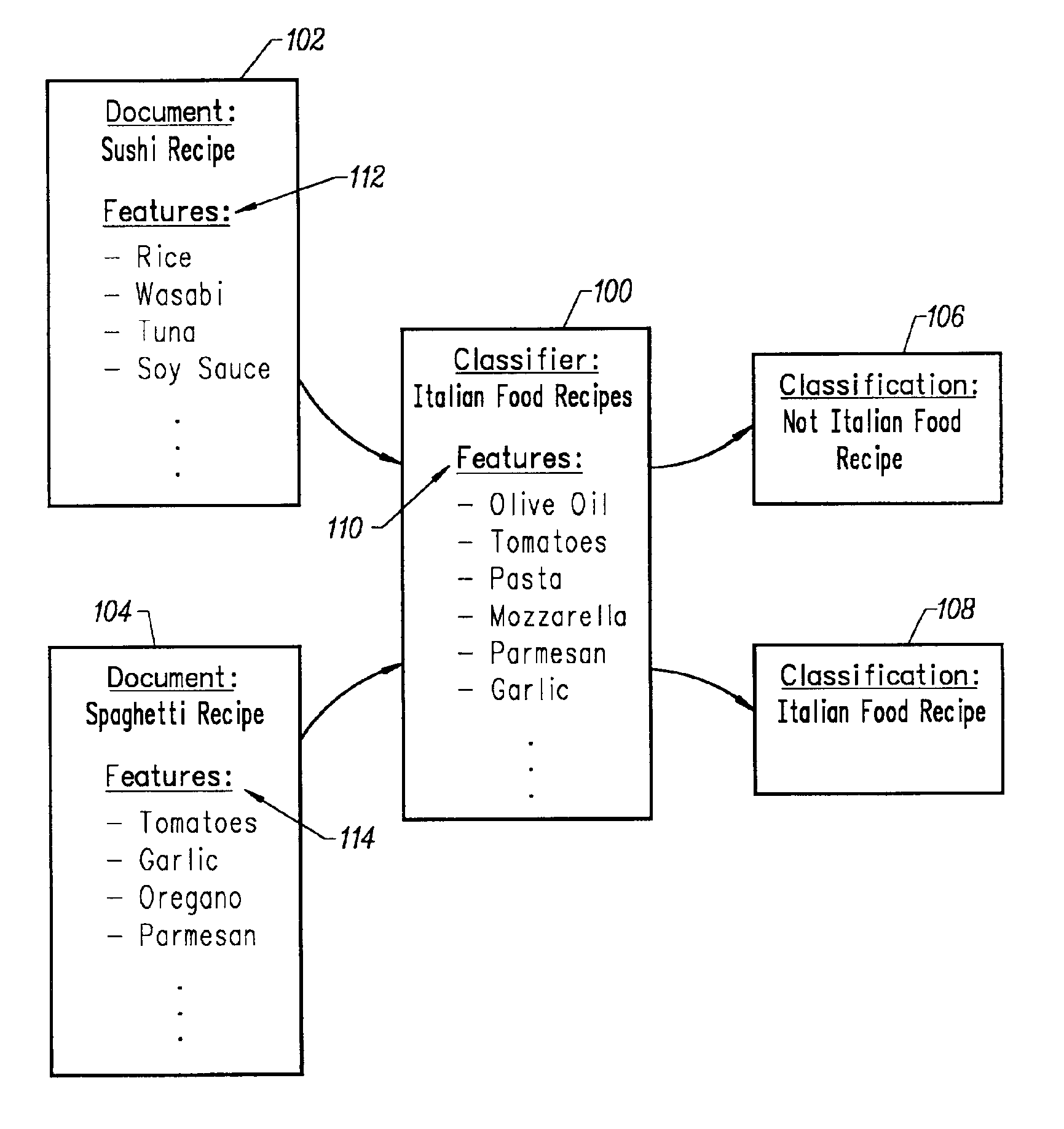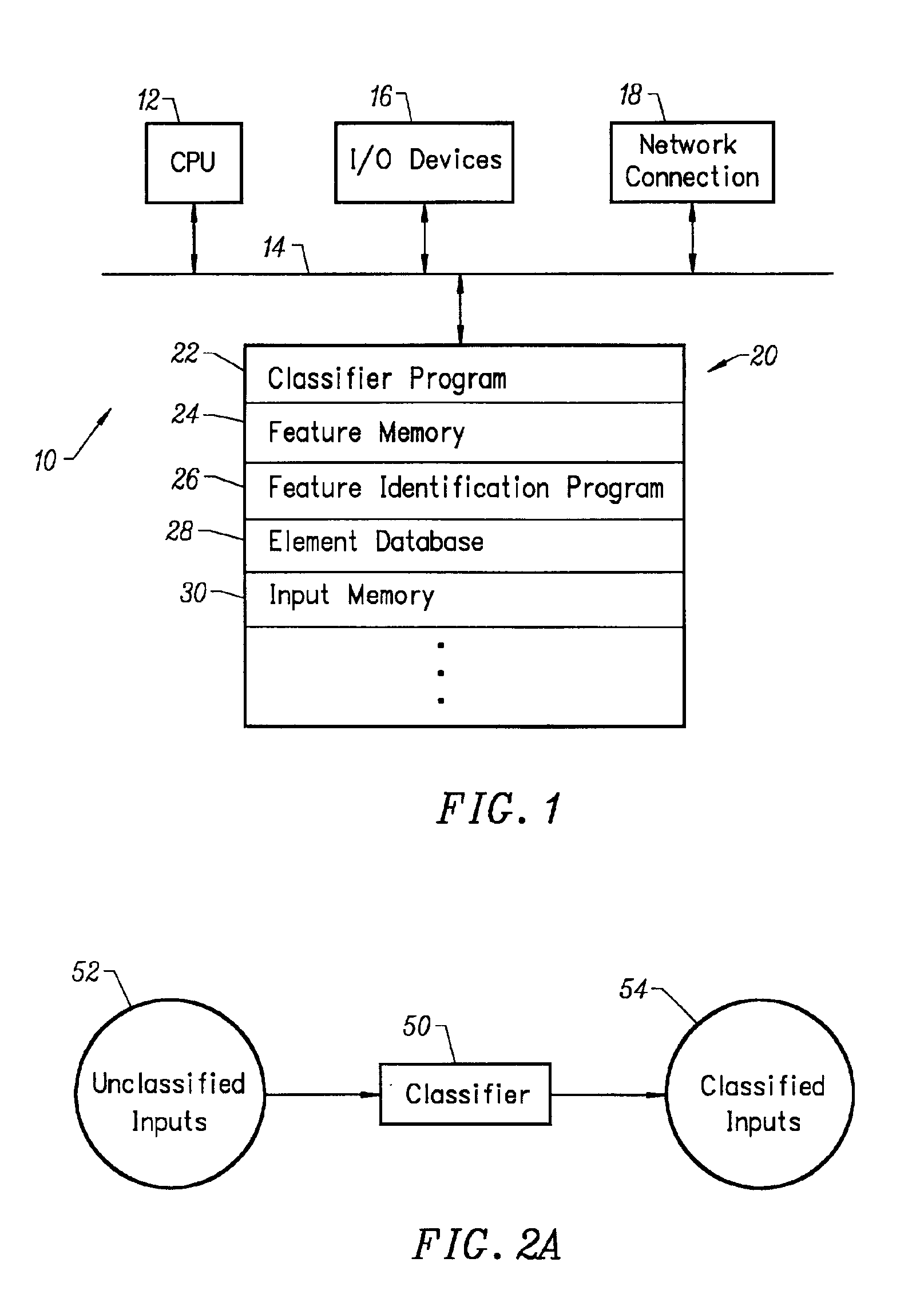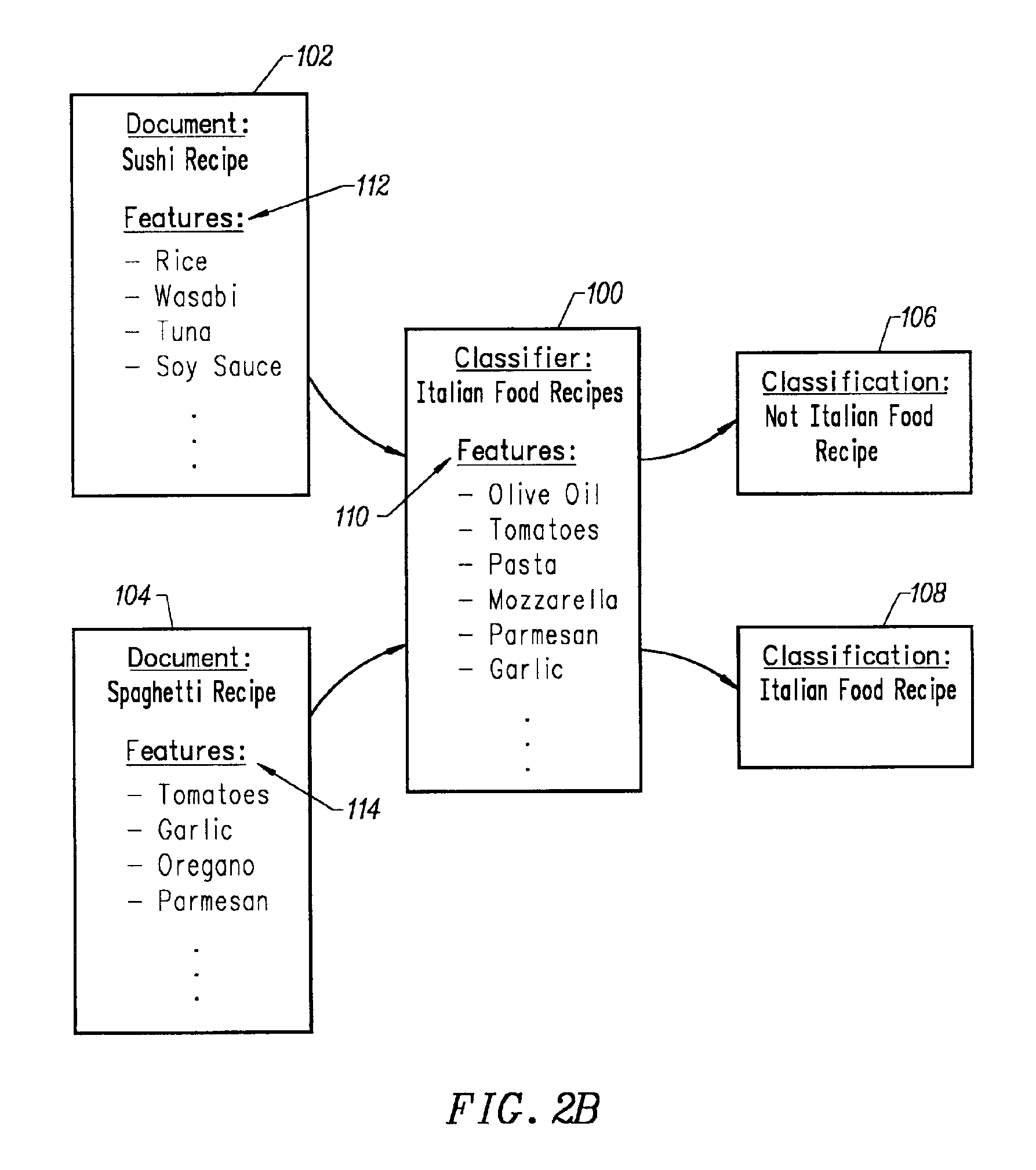Method and apparatus for determining classifier features with minimal supervision
a classifier and feature technology, applied in the field of machine learning, can solve the problems of time-consuming and costly manual labeling/highlighting process, and achieve the effect of saving significant time and effor
- Summary
- Abstract
- Description
- Claims
- Application Information
AI Technical Summary
Benefits of technology
Problems solved by technology
Method used
Image
Examples
first embodiment
[0030]The presence of features that satisfy (3) is deemed indicative of class C. These features can then be used to build a classifier for class C. The determination of features that satisfy (3) can be accomplished in a number of ways, all of which fall within the concept of the present invention. FIG. 4 illustrates the processing steps of a first embodiment in accordance with the conceptual grouping of FIG. 3. The first processing step is to define set P (step 200). Set P can be a set of any inputs, such as documents, physical objects, or anything else capable of being recognized by a classifier. Elements of P are typically stored in element database 28.
[0031]The next processing step is to define subset S, defined as all elements of P with feature s (step 202). Feature s should be chosen such that condition (1) is satisfied. In the example above, one feature s could be the term “fettuccine.” It is likely that documents containing this term are much more likely to be Italian food re...
second embodiment
[0040]FIG. 5 illustrates the processing steps of a second embodiment in accordance with the conceptual grouping of FIG. 3. In this embodiment, the conceptual groupings of FIG. 3 are used in an iterative manner to identify more features than would otherwise likely be obtained. This embodiment includes determining a list of features and their associated weights (a measure of how well the feature would function as an indicator of a class), determining S based on one feature in the list, and then determining R based on other features in the list. Other features are identified using the concept of FIG. 3, these features are added to the list depending on their weights, and the process is repeated with other features. This embodiment thus exemplifies the concept of determining a set of features and associated weights, using these features to determine new features, and updating this set with the new features if they are better than the current features.
[0041]The first processing step is t...
PUM
 Login to View More
Login to View More Abstract
Description
Claims
Application Information
 Login to View More
Login to View More - R&D
- Intellectual Property
- Life Sciences
- Materials
- Tech Scout
- Unparalleled Data Quality
- Higher Quality Content
- 60% Fewer Hallucinations
Browse by: Latest US Patents, China's latest patents, Technical Efficacy Thesaurus, Application Domain, Technology Topic, Popular Technical Reports.
© 2025 PatSnap. All rights reserved.Legal|Privacy policy|Modern Slavery Act Transparency Statement|Sitemap|About US| Contact US: help@patsnap.com



